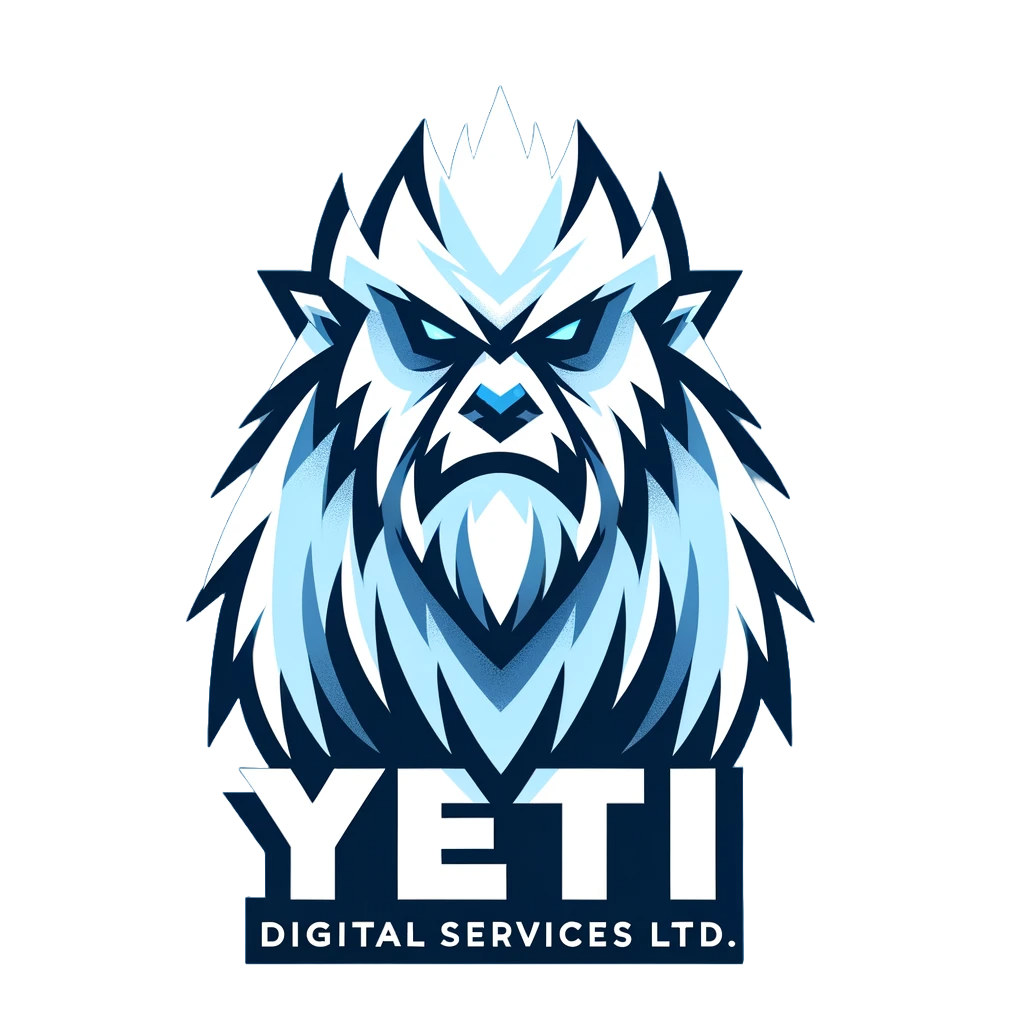Table of Contents
ToggleIntroduction
Artificial Intelligence (AI) Assessment, AI System Evaluation, and AI Governance are becoming increasingly important as AI technologies continue to advance and integrate into various aspects of our lives. As organizations increasingly rely on AI to make critical decisions and automate processes, it is crucial to ensure that these systems are developed and deployed responsibly. This is where AI audits come in – a vital tool for promoting Algorithmic Accountability and conducting Ethical AI Reviews.
AI audits play a critical role in safeguarding AI systems by identifying and mitigating potential risks, biases, and unintended consequences. They provide a comprehensive framework for assessing the fairness, transparency, and accountability of AI systems, ensuring that they align with ethical principles and regulatory requirements. By conducting regular AI audits, organizations can build trust with their stakeholders, demonstrate their commitment to responsible AI practices, and unlock the full potential of AI while minimizing harm.
The growing importance of AI in various industries
The growing importance of AI in various industries is evident as more organizations adopt AI technologies to streamline processes, improve decision-making, and gain a competitive edge. From healthcare and finance to manufacturing and retail, AI is transforming the way businesses operate, enabling them to analyze vast amounts of data, automate tasks, and deliver personalized experiences to customers. As AI continues to advance and become more accessible, its impact on industries is expected to grow exponentially, driving innovation, efficiency, and growth across sectors.
The need for responsible AI development and deployment
As AI technology becomes more prevalent and influential in our lives, the commitment to responsible AI development and deployment is unwavering. AI systems make decisions that can have significant impacts on individuals and society, so it is essential to ensure that these systems are developed and  deployed ethically, transparently, and accountable. This commitment ensures a future where AI is a force for good, instilling confidence in its potential.
deployed ethically, transparently, and accountable. This commitment ensures a future where AI is a force for good, instilling confidence in its potential.
This involves addressing potential biases in data and algorithms, ensuring the privacy and security of personal information, and establishing clear guidelines for human oversight and control. Responsible AI development also requires ongoing monitoring and assessment to identify and mitigate unintended consequences and risks. By prioritizing responsible AI practices, organizations can build trust with their stakeholders, comply with regulations, and harness the benefits of AI while minimizing potential harm.
The role of AI audits in ensuring ethical and accountable AI
The role of AI audits in ensuring ethical and accountable AI is paramount as it provides a structured framework for assessing and verifying the integrity of AI systems. AI audits help organizations identify and address potential biases, discriminatory outcomes, and unintended consequences that may arise from the development and deployment of AI technologies. By conducting regular audits, organizations can ensure that their AI systems align with ethical principles, legal requirements, and industry best practices.
AI audits also promote transparency by providing clear documentation of the AI development process, enhancing accountability, and allowing stakeholders to understand how AI systems arrive at their outputs. As AI continues to permeate various aspects of our lives, the role of AI audits in ensuring ethical and accountable AI will only become more critical in safeguarding the responsible development and deployment of this transformative technology.
What is an AI audit?
An AI audit is a comprehensive evaluation and assessment of an artificial intelligence system to ensure  that it operates in an ethical, transparent, and accountable manner. The primary purpose of an AI audit is to identify and mitigate potential risks, biases, and unintended consequences associated with the development and deployment of AI technologies.
that it operates in an ethical, transparent, and accountable manner. The primary purpose of an AI audit is to identify and mitigate potential risks, biases, and unintended consequences associated with the development and deployment of AI technologies.
During an AI audit, a team of experts, including data scientists, ethicists, and domain specialists, review the AI system’s design, data inputs, algorithms, and outputs to assess its fairness, accuracy, and reliability. This process involves examining the data used to train the AI system, testing for potential biases or discriminatory outcomes, and evaluating the system’s performance across different scenarios and populations.
Definition and purpose of AI audits
An AI audit is a systematic examination and evaluation of an artificial intelligence system to assess its compliance with ethical principles, regulatory requirements, and industry best practices. The primary purpose of an AI audit is to ensure that the AI system operates in a fair, transparent, and accountable manner, minimizing potential risks and unintended consequences.
AI audits serve as a crucial tool for organizations to identify and address issues related to bias, discrimination, privacy, security, and transparency in their AI systems. By conducting regular AI audits, organizations can verify that their AI systems are functioning as intended, align with their values and goals, and do not cause harm to individuals or society.
Moreover, AI audits help organizations build trust with their stakeholders by demonstrating a commitment to responsible AI development and deployment. They provide a means to hold organizations accountable for their AI systems’ decisions and actions, promoting public confidence in the technology. As AI becomes increasingly integrated into various aspects of our lives, the importance of AI audits in ensuring the ethical and responsible use of this powerful technology cannot be overstated.
Key components of an AI audit process
The key components of an AI audit process include a comprehensive assessment of the AI system’s design, development, and deployment stages. This involves evaluating the data used to train the AI  model, ensuring that it is representative, unbiased, and of high quality. The audit process also examines the algorithms and models employed by the AI system, assessing their fairness, transparency, and robustness.
model, ensuring that it is representative, unbiased, and of high quality. The audit process also examines the algorithms and models employed by the AI system, assessing their fairness, transparency, and robustness.
This includes testing for potential biases, discriminatory outcomes, and unintended consequences and verifying the system’s performance across different scenarios and populations. Another crucial component of an AI audit is reviewing the system’s governance and accountability mechanisms, ensuring that clear policies and procedures are in place for monitoring, updating, and controlling the AI system.
This includes assessing the human oversight and intervention capabilities, as well as the system’s ability to explain its decisions and actions. Additionally, the audit process evaluates the AI system’s compliance with relevant laws, regulations, and ethical guidelines, such as data protection and privacy requirements. By thoroughly examining these key components, an AI audit provides a comprehensive assessment of an AI system’s integrity, reliability, and trustworthiness.
Why are AI audits important?
AI audits are important because they help ensure that artificial intelligence systems are developed and deployed responsibly and ethically. As AI becomes more integrated into various aspects of our lives, the potential for unintended consequences and harmful impacts grows. AI audits provide a critical safeguard against these risks by systematically examining AI systems for potential biases, discriminatory outcomes, privacy violations, and security vulnerabilities.
By identifying and mitigating these problems early on, AI audits help organizations avoid costly mistakes, reputational damage, and legal liabilities. Moreover, AI audits promote transparency and accountability, enabling organizations to demonstrate their commitment to responsible AI practices and building trust with their stakeholders. By regularly conducting AI audits and openly communicating the results, organizations can foster public confidence in the technology and ensure that its benefits are realized in an equitable and ethical manner.
Identifying and mitigating potential biases and discriminatory outcomes
Identifying and mitigating potential biases and discriminatory outcomes is crucial in AI audits. Bias in AI systems can arise from biased data, flawed algorithms, or the unintentional reflection of human biases in the AI development process, leading to unfair disadvantages or exclusion for certain groups. To identify potential biases, AI audits thoroughly examine the training data for representativeness and diversity and review algorithms and models for inherent biases or unfair treatment.
This may involve testing the AI system’s performance across different demographics and comparing outcomes. Once biases are identified, mitigation strategies such as adjusting training data, modifying algorithms, or incorporating fairness constraints can be implemented. Regular monitoring and re-auditing ensure that these efforts remain effective over time.
Ensuring compliance with regulations and ethical guidelines
Ensuring compliance with regulations and ethical guidelines is fundamental to AI audits. As AI  technologies become more pervasive, governments and industry organizations have developed regulations and guidelines to promote responsible AI development and deployment, such as data privacy laws and ethical principles. AI audits verify that AI systems comply with these standards by examining data handling practices, adherence to ethical principles like transparency, fairness, and accountability, and the presence of appropriate human oversight and control mechanisms.
technologies become more pervasive, governments and industry organizations have developed regulations and guidelines to promote responsible AI development and deployment, such as data privacy laws and ethical principles. AI audits verify that AI systems comply with these standards by examining data handling practices, adherence to ethical principles like transparency, fairness, and accountability, and the presence of appropriate human oversight and control mechanisms.
This involves assessing the system’s ability to explain decisions, testing for biases and discriminatory outcomes, and ensuring compliance with privacy regulations. By doing so, AI audits help organizations mitigate legal and reputational risks, build trust with stakeholders, and contribute to the responsible development and deployment of AI technologies.
Enhancing transparency and accountability in AI decision-making
Enhancing transparency and accountability in AI decision-making is a key objective of AI audits. This involves ensuring that AI systems can provide clear explanations for their decisions, allowing stakeholders to understand how outcomes are reached. Audits assess the interpretability and explainability of AI models, promoting transparency. Additionally, audits examine the presence of appropriate governance mechanisms, such as human oversight and the ability to review and challenge AI-driven decisions, fostering accountability.
What are the main areas covered in an AI audit?
Data quality and integrity
Data quality and integrity are crucial aspects of AI audits, as the performance and fairness of AI systems heavily rely on the data used to train and operate them. AI audits assess the quality of data by examining factors such as accuracy, completeness, consistency, and timeliness. This involves verifying that the data is free from errors, gaps, and contradictions and that it is up-to-date and relevant to the AI system’s intended purpose.
Auditors also evaluate the integrity of data, ensuring that it is collected, processed, and stored securely and ethically. This includes assessing data provenance, confirming that the data is obtained from reliable sources, and obtaining any necessary consents or permissions.
Data integrity also involves examining the measures in place to protect data from unauthorized access, manipulation, or breaches and ensuring compliance with relevant data protection regulations. By thoroughly assessing data quality and integrity, AI audits help organizations build more reliable, fair, and trustworthy AI systems.
Algorithm fairness and explainability
Algorithm fairness and explainability are key considerations in AI audits, as they directly impact the transparency and accountability of AI systems. Algorithmic fairness refers to ensuring that AI models do not discriminate against certain groups of individuals based on protected characteristics such as race, gender, age, or disability.
 Auditors assess fairness by examining the AI system’s decision-making processes and outcomes for any disparities or biases that may disadvantage specific groups. This involves testing the AI model’s performance across different subpopulations and comparing the results to identify any unfair treatment. Explainability, on the other hand, focuses on the ability of an AI system to provide clear and understandable explanations for its decisions and predictions.
Auditors assess fairness by examining the AI system’s decision-making processes and outcomes for any disparities or biases that may disadvantage specific groups. This involves testing the AI model’s performance across different subpopulations and comparing the results to identify any unfair treatment. Explainability, on the other hand, focuses on the ability of an AI system to provide clear and understandable explanations for its decisions and predictions.
AI audits evaluate the interpretability of AI models, assessing whether the underlying logic and reasoning can be easily communicated to stakeholders. This may involve examining the features and factors that influence the AI system’s outputs and the presence of any black-box components that hinder transparency. By promoting algorithmic fairness and explainability, AI audits help ensure that AI systems are not only accurate and reliable but also ethical and accountable.
Privacy and security considerations
Privacy and security considerations are critical components of AI audits, as AI systems often handle sensitive and personal data. Auditors assess the measures in place to protect the privacy of individuals whose data is collected, processed, and stored by the AI system.
This involves examining data handling practices to ensure compliance with relevant privacy regulations, such as the General Data Protection Regulation (GDPR) or the California Consumer Privacy Act (CCPA). Auditors also evaluate the security measures implemented to safeguard data from unauthorized access, breaches, or misuse.
This includes assessing the robustness of encryption techniques, access controls, and monitoring systems. Additionally, AI audits consider the potential privacy implications of AI models themselves, such as the risk of re-identification or the unintended exposure of sensitive information through model outputs or explanations.
By thoroughly addressing privacy and security considerations, AI audits help organizations build trust with their stakeholders and mitigate the risks associated with handling personal data in AI systems.
Human oversight and governance
Human oversight and governance are crucial in AI audits to ensure that AI systems remain under  human control and are used responsibly. Auditors assess the effectiveness of governance mechanisms that allow humans to monitor, review, and intervene in AI decision-making processes. This includes examining the roles and responsibilities of human operators and the procedures for escalating issues.
human control and are used responsibly. Auditors assess the effectiveness of governance mechanisms that allow humans to monitor, review, and intervene in AI decision-making processes. This includes examining the roles and responsibilities of human operators and the procedures for escalating issues.
Auditors also evaluate the transparency and interpretability of AI systems, ensuring that human stakeholders can understand the reasoning behind AI-driven decisions, especially in high-stakes scenarios. Additionally, AI audits assess accountability measures, such as the ability to assign responsibility for AI system outcomes and the presence of clear feedback and redress mechanisms. By ensuring robust human oversight and governance, AI audits help organizations maintain control over their AI systems and ensure their responsible and ethical deployment.
How are AI audits conducted?
Establishing an AI audit framework
Establishing an AI audit framework is crucial for organizations to systematically assess and mitigate the risks associated with AI systems. An effective AI audit framework should be comprehensive, covering all relevant aspects of AI development and deployment, from data quality and model performance to ethical considerations and legal compliance.
The framework should define clear objectives, scope, and criteria for the audit, as well as the roles and responsibilities of the auditors and stakeholders involved. It should also outline the specific methods and tools to be used for assessing AI systems, such as data analysis, model testing, and stakeholder interviews.
Additionally, the AI audit framework should be flexible and adaptable to accommodate the rapidly evolving nature of AI technologies and the varying contexts in which they are applied. It should also incorporate mechanisms for continuous monitoring and improvement, ensuring that the organization’s AI systems remain aligned with ethical principles and regulatory requirements over time. By establishing a robust AI audit framework, organizations can proactively identify and address the risks associated with AI, build trust with their stakeholders, and ensure the responsible and beneficial deployment of AI technologies.
Engaging internal and external stakeholders
Engaging internal and external stakeholders is a critical aspect of AI audits, as it ensures that diverse perspectives and concerns are considered throughout the auditing process. Internal stakeholders may include AI developers, data scientists, business leaders, and legal and compliance teams.
 Engaging these stakeholders helps auditors gain a comprehensive understanding of the AI system’s purpose, design, and implementation, as well as the organizational context in which it operates. It also promotes a sense of ownership and accountability among internal stakeholders, encouraging them to actively participate in the auditing process and implement necessary improvements. External stakeholders, on the other hand, may include customers, regulators, industry associations, and civil society organizations. Engaging these stakeholders allows auditors to gather valuable insights into the potential impacts and risks of the AI system from an outside perspective.
Engaging these stakeholders helps auditors gain a comprehensive understanding of the AI system’s purpose, design, and implementation, as well as the organizational context in which it operates. It also promotes a sense of ownership and accountability among internal stakeholders, encouraging them to actively participate in the auditing process and implement necessary improvements. External stakeholders, on the other hand, may include customers, regulators, industry associations, and civil society organizations. Engaging these stakeholders allows auditors to gather valuable insights into the potential impacts and risks of the AI system from an outside perspective.
It also helps organizations build trust and credibility with their external stakeholders by demonstrating a commitment to transparency and responsible AI practices.
Effective stakeholder engagement may involve various methods, such as interviews, workshops, surveys, and public consultations, depending on the scale and complexity of the AI system being audited. By actively engaging both internal and external stakeholders, AI audits can ensure that AI systems are developed and deployed in a manner that meets the needs and expectations of all relevant parties.
Conducting assessments and testing
Conducting assessments and testing is a fundamental component of AI audits, as it provides the necessary evidence to evaluate the performance, fairness, and compliance of AI systems. Auditors employ a range of methods and tools to assess various aspects of the AI system, such as data quality, model accuracy, bias detection, and explainability.
One key assessment area is data testing, which involves examining the datasets used to train and validate the AI model. Auditors assess the quality, representativeness, and relevance of the data, as well as any potential biases or limitations. They may use statistical techniques and data visualization tools to identify any data gaps, outliers, or inconsistencies that could impact the AI system’s performance.
Model testing is another critical assessment area that focuses on evaluating the performance and fairness of the AI model itself. Auditors may use techniques such as cross-validation, sensitivity analysis, and fairness metrics to assess the model’s accuracy, robustness, and potential biases. They may also conduct stress tests to evaluate the model’s performance under different scenarios or edge cases.
 Explainability assessments are also crucial, particularly for complex AI models such as deep learning networks. Auditors may use techniques such as feature importance analysis, decision tree visualization, and counterfactual explanations to assess the interpretability and transparency of the AI model’s decision-making process.
Explainability assessments are also crucial, particularly for complex AI models such as deep learning networks. Auditors may use techniques such as feature importance analysis, decision tree visualization, and counterfactual explanations to assess the interpretability and transparency of the AI model’s decision-making process.
In addition to these technical assessments, auditors may also conduct user testing and stakeholder interviews to gather feedback on the AI system’s usability, effectiveness, and potential impacts. This helps ensure that the AI system meets the needs and expectations of its intended users and stakeholders.
Documenting findings and recommendations
Documenting findings and recommendations is a critical step in the AI audit process, as it provides a clear and comprehensive record of the audit’s outcomes and the actions required to address any identified issues or risks. The audit report should be structured in a logical and accessible manner, with an executive summary highlighting the key findings and recommendations, followed by detailed sections on each assessment area.
The findings section should present the results of the various assessments and tests conducted during the audit, including data quality, model performance, fairness, explainability, and user feedback. Auditors should use a combination of quantitative and qualitative evidence to support their findings, such as statistical metrics, data visualizations, and stakeholder quotes. They should also provide an analysis of the potential impacts and risks associated with each finding, as well as any relevant contextual factors or limitations.
The recommendations section should outline the specific actions required to address the identified issues or risks, prioritized based on their severity and urgency. Recommendations may include technical improvements, such as data cleansing, model retraining, or feature selection, as well as organizational measures, such as policy updates, staff training, or stakeholder engagement. Auditors should provide clear guidance on the implementation of each recommendation, including timelines, resources, and responsibilities.
 In addition to the main findings and recommendations, the audit report should also include an overview of the audit methodology, scope, and limitations, as well as any relevant references or appendices. Relevant stakeholders, such as AI developers, business leaders, and legal and compliance teams, should review and validate the report to ensure its accuracy and completeness.
In addition to the main findings and recommendations, the audit report should also include an overview of the audit methodology, scope, and limitations, as well as any relevant references or appendices. Relevant stakeholders, such as AI developers, business leaders, and legal and compliance teams, should review and validate the report to ensure its accuracy and completeness.
By thoroughly documenting the findings and recommendations of the AI audit, organizations can establish a clear roadmap for improving the performance, fairness, and compliance of their AI systems. The audit report serves as a valuable resource for internal and external stakeholders, demonstrating the organization’s commitment to responsible AI practices and providing a foundation for ongoing monitoring and improvement.
Who is responsible for conducting AI audits?
The role of internal teams (e.g., data scientists, ethics committees)
Internal teams are crucial to the AI audit process, contributing their expertise and perspectives to ensure a comprehensive assessment of the organization’s AI systems. Data scientists provide technical knowledge to evaluate the performance, fairness, and explainability of AI models, conducting assessments such as data quality checks and bias detection. Ethics committees offer guidance on the ethical implications of AI, considering broader societal and human impacts beyond technical metrics.
They help develop ethical guidelines for responsible AI development and deployment. Other internal teams, such as legal and compliance, risk management, and human resources, ensure compliance with regulations, mitigate risks, and provide necessary skills and resources. Effective collaboration among these teams through clear roles, responsibilities, and communication channels is essential for conducting comprehensive and effective AI audits, leading to the responsible deployment of AI technologies.
The importance of independent third-party auditors
Independent third-party auditors are crucial for ensuring the objectivity, credibility, and effectiveness of AI audits. They provide an unbiased assessment of an organization’s AI systems, free from internal ![]() biases or conflicts of interest. Third-party auditors bring specialized expertise and experience, drawing on best practices and advanced tools to conduct comprehensive assessments.
biases or conflicts of interest. Third-party auditors bring specialized expertise and experience, drawing on best practices and advanced tools to conduct comprehensive assessments.
Engaging external auditors enhances transparency and accountability, demonstrating an organization’s commitment to responsible AI practices and building trust with stakeholders.
Third-party audit reports serve as valuable evidence of compliance with legal and ethical requirements, mitigating potential risks. However, it is essential to carefully select reputable and qualified auditors, establish clear criteria and processes for engagement, and maintain regular communication throughout the audit process. By combining the expertise of independent auditors with the insights of internal teams, organizations can conduct comprehensive and credible AI audits that promote responsible AI deployment.
Collaboration between AI developers, users, and auditors
Collaboration between AI developers, users, and auditors is essential for effective AI audits. Developers provide technical insights, users offer real-world feedback, and auditors bring objectivity and expertise. Regular communication, clear roles, and a shared commitment to responsible AI are key. By working together, these stakeholders can ensure that AI systems are thoroughly assessed, risks are mitigated, and benefits are maximized.
What are the challenges and limitations of AI audits?
Keeping pace with rapidly evolving AI technologies
Keeping pace with rapidly evolving AI technologies is a major challenge for AI audits. Auditors must continuously update their knowledge and skills to effectively assess the latest AI systems and techniques. This requires ongoing training, research, and collaboration with AI experts. Auditors should also adopt flexible and adaptive audit frameworks that can accommodate new AI developments. Regular monitoring and review of AI systems is crucial to identify and address emerging risks and opportunities in a timely manner.
Balancing transparency and proprietary information
Balancing transparency and proprietary information is a delicate challenge in AI audits. On one hand, transparency is essential for building trust and accountability in AI systems. Stakeholders, including users, regulators, and the public, have a legitimate interest in understanding how AI systems work, what data they use, and how they make decisions. Transparency enables informed consent, facilitates oversight, and promotes responsible AI practices.
 On the other hand, AI developers and organizations often have legitimate concerns about protecting their proprietary information, such as algorithms, models, and trade secrets. Revealing too much information could compromise their competitive advantage, intellectual property rights, and security. It could also expose them to potential legal and reputational risks.
On the other hand, AI developers and organizations often have legitimate concerns about protecting their proprietary information, such as algorithms, models, and trade secrets. Revealing too much information could compromise their competitive advantage, intellectual property rights, and security. It could also expose them to potential legal and reputational risks.
To balance these competing interests, AI audits should adopt a nuanced and context-specific approach to transparency. This may involve:
Providing different levels of information to different stakeholders based on their roles, needs, and permissions. For example, regulators may require more detailed technical information than the general public.
Sharing sensitive information using secure and confidential channels, such as non-disclosure agreements, encrypted communications, and access controls.
Focusing on key aspects of AI systems that are most relevant for transparency, such as data sources, model performance, decision-making processes, and potential biases, while protecting specific proprietary details.
Engaging in proactive and transparent communication with stakeholders about the AI audit process, findings, and limitations, while respecting legitimate proprietary boundaries.
Collaborating with AI developers and organizations to identify mutually acceptable ways to balance transparency and proprietary concerns, such as using proxy metrics, aggregated data, or simulated environments.
Ultimately, the goal of AI audits should be to promote responsible and trustworthy AI practices that benefit all stakeholders. By carefully navigating the balance between transparency and proprietary information, auditors can help build public trust in AI systems while respecting the legitimate interests of AI developers and organizations.
Addressing complex ethical dilemmas and trade-offs
AI audits often involve complex ethical dilemmas and trade-offs that require careful consideration. For example, auditors may need to balance fairness and accuracy in AI models, ensuring that the system does not discriminate against certain groups while still maintaining high performance.
They may also need to navigate tensions between privacy and transparency, protecting sensitive data while providing sufficient information for accountability. Additionally, auditors must weigh the short-term benefits of AI against potential long-term risks, such as job displacement or unintended consequences.
To address these challenges, auditors must engage diverse stakeholders, including AI developers, users, ethicists, and affected communities, to gather multiple perspectives and insights. They should use established ethical frameworks, such as the principles of beneficence, non-maleficence, autonomy, and justice, to guide their decision-making and recommendations. Auditors must also be transparent about the limitations and uncertainties of their assessments, acknowledging the complexity and context-specificity of ethical dilemmas in AI.
Ultimately, auditors should provide nuanced and actionable recommendations that balance competing interests and priorities. This may involve suggesting technical modifications, such as adjusting model parameters or using different datasets, as well as organizational measures, such as establishing ethical review processes or engaging in public consultations. By carefully navigating the ethical complexities of AI, auditors can help ensure that AI systems are developed and deployed responsibly and trustworthily.
How can organizations prepare for AI audits?
Establishing clear AI governance frameworks
Establishing clear AI governance frameworks is crucial for ensuring effective and consistent AI audits. These frameworks should define the roles, responsibilities, and accountability mechanisms for all stakeholders involved in the AI lifecycle, from developers to users to auditors.
 They should also set clear policies, standards, and guidelines for AI development, deployment, and monitoring that are aligned with relevant laws, regulations, and ethical principles. Effective AI governance frameworks should be flexible enough to adapt to new technologies and challenges while providing a robust foundation for trust and accountability.
They should also set clear policies, standards, and guidelines for AI development, deployment, and monitoring that are aligned with relevant laws, regulations, and ethical principles. Effective AI governance frameworks should be flexible enough to adapt to new technologies and challenges while providing a robust foundation for trust and accountability.
Regular review and updating of these frameworks, informed by diverse stakeholder input and practical experience, is essential to keeping pace with AI’s rapid evolution. By establishing clear AI governance frameworks, organizations can create a shared understanding and commitment to responsible AI practices, facilitating more effective and impactful AI audits.
Documenting AI development and deployment processes
Documenting AI development and deployment processes is essential for enabling effective AI audits. This documentation should cover the entire AI lifecycle, from initial design and data collection to model training, testing, and implementation. It should include details on the algorithms and techniques used, the data sources and preprocessing steps, the performance metrics and evaluation procedures, and the decision-making and oversight mechanisms.
Documentation should also capture any changes, updates, or incidents throughout the AI system’s operation, as well as the rationale behind key choices and trade-offs. Clear, comprehensive, and up-to-date documentation provides a crucial audit trail for assessing the fairness, transparency, and accountability of AI systems.
It enables auditors to understand how the AI system was developed and deployed, identify potential risks and limitations, and verify compliance with relevant standards and regulations. Effective documentation practices, such as using standardized templates, version control, and secure storage, can facilitate more efficient and reliable AI audits.
Fostering a culture of responsible AI practices
Fostering a culture of responsible AI practices is crucial for the success of AI audits. This involves creating an organizational environment that prioritizes ethical considerations, accountability, and transparency in all aspects of AI development and deployment.
 Leaders should set a clear tone from the top, emphasizing the importance of responsible AI and providing the necessary resources and support for implementing best practices. Regular training and awareness programs can help build a shared understanding of ethical principles and standards among all employees involved in the AI lifecycle.
Leaders should set a clear tone from the top, emphasizing the importance of responsible AI and providing the necessary resources and support for implementing best practices. Regular training and awareness programs can help build a shared understanding of ethical principles and standards among all employees involved in the AI lifecycle.
Encouraging open dialogue, questioning, and reporting of potential issues can create a psychologically safe space for surfacing and addressing ethical concerns. Recognizing and rewarding responsible AI practices, such as through performance evaluations and incentives, can reinforce desired behaviors.
By embedding responsible AI into the core values, norms, and processes of the organization, a culture of integrity and accountability can be cultivated, laying the foundation for robust and credible AI audits.
Investing in AI audit expertise and resources
Investing in AI audit expertise and resources is essential for conducting effective and credible AI audits. Organizations should prioritize the development of specialized AI audit skills and knowledge, both internally and through external partnerships.
This may involve training existing audit personnel on AI-specific methodologies, tools, and best practices, as well as recruiting new talent with expertise in AI, data science, and ethics. Providing ongoing learning and development opportunities can help auditors stay up-to-date with the latest advancements and challenges in the field.
Organizations should also allocate sufficient financial, technological, and human resources to support AI audit activities, such as acquiring specialized software, accessing relevant datasets, and engaging with external experts and stakeholders. Collaborating with academic institutions, research centers, and professional associations can provide valuable insights, resources, and best practices for AI audits.
By investing in AI audit expertise and resources, organizations can build the necessary capabilities and capacity to conduct rigorous and reliable assessments of their AI systems, promoting trust and accountability.
What is the future of AI audits?
The increasing adoption of AI audits across industries
The increasing adoption of AI audits across industries reflects a growing recognition of the importance of responsible AI practices. As AI systems become more prevalent and impactful in various domains, from healthcare and finance to transportation and criminal justice, there is a heightened awareness of the potential risks and challenges they pose.
Regulators, stakeholders, and the public are demanding greater transparency, accountability, and oversight of AI systems to ensure their fairness, safety, and alignment with societal values. In response, many organizations are proactively embracing AI audits as a way to demonstrate their commitment to responsible AI and build trust with their stakeholders.
They are establishing AI audit programs, frameworks, and standards tailored to their specific industry contexts and requirements. This trend is likely to accelerate as AI technologies continue to advance and permeate more aspects of our lives, and as regulatory pressures and public scrutiny intensify.
By adopting AI audits, organizations across industries can proactively identify and mitigate risks, ensure compliance, and drive the responsible development and deployment of AI for the benefit of all.
The potential for standardized AI audit frameworks and certifications
The development of standardized AI audit frameworks and certifications has the potential to significantly enhance the consistency, reliability, and credibility of AI audits across industries. Standardized frameworks can provide a common set of principles, guidelines, and criteria for assessing  the fairness, transparency, accountability, and robustness of AI systems, helping to ensure that AI audits are comprehensive, rigorous, and aligned with best practices and ethical standards.
the fairness, transparency, accountability, and robustness of AI systems, helping to ensure that AI audits are comprehensive, rigorous, and aligned with best practices and ethical standards.
Certifications can provide formal recognition and assurance that an AI system has undergone a thorough and independent audit and meets established standards of quality and responsibility.
However, developing standardized AI audit frameworks and certifications also presents challenges. Given the diversity and complexity of AI systems and their applications, it may be difficult to develop one-size-fits-all frameworks that are applicable and relevant across all contexts. Frameworks also risk becoming outdated or inflexible in the face of rapid technological change and evolving societal expectations. Despite these challenges, collaborative efforts involving diverse stakeholders can help develop and refine these frameworks and certifications over time, promoting responsible AI practices at scale.
The role of AI audits in building public trust and confidence in AI systems
AI audits play a crucial role in building public trust and confidence in AI systems. As AI technologies become more prevalent and impactful in our lives, there is growing concern about their potential risks and unintended consequences.
The public wants assurance that AI systems are being developed and deployed responsibly, transparently, and accountable, aligned with societal values and ethical principles. AI audits provide a mechanism for independently assessing and verifying the fairness, safety, and robustness of AI systems, helping to address public concerns and skepticism.
 By conducting rigorous and objective evaluations of AI systems, audits can identify potential biases, errors, or vulnerabilities that may undermine public trust. They can also assess the adequacy of governance structures, policies, and processes surrounding AI development and deployment, ensuring that appropriate safeguards and oversight mechanisms are in place. AI audits can provide a level of transparency and accountability that is essential for building public confidence, by shedding light on the inner workings of AI systems and the decisions made by their creators.
By conducting rigorous and objective evaluations of AI systems, audits can identify potential biases, errors, or vulnerabilities that may undermine public trust. They can also assess the adequacy of governance structures, policies, and processes surrounding AI development and deployment, ensuring that appropriate safeguards and oversight mechanisms are in place. AI audits can provide a level of transparency and accountability that is essential for building public confidence, by shedding light on the inner workings of AI systems and the decisions made by their creators.
Moreover, AI audits can facilitate public engagement and dialogue around the responsible development and use of AI. By involving diverse stakeholders, including civil society organizations, consumer advocates, and affected communities, in the audit process, audits can help surface and address public concerns, expectations, and values related to AI. This inclusive and participatory approach can foster greater public understanding, trust, and support for AI technologies.
However, to effectively build public trust, AI audits themselves must be trustworthy and credible. This requires ensuring the independence, objectivity, and competence of auditors, as well as the transparency and reliability of audit methodologies and findings. Communicating the results of AI audits in a clear, accessible, and meaningful way to the public is also critical for building trust and understanding.
As AI continues to evolve and permeate various aspects of society, the role of AI audits in building and maintaining public trust will only become more important. By providing a robust and reliable mechanism for assessing and assuring the responsible development and deployment of AI, audits can help bridge the trust gap between the public and AI systems, enabling the realization of AI’s benefits while mitigating its risks.
Frequently Asked Questions
What is the purpose of an AI audit?
An AI audit is a comprehensive evaluation of an AI system to assess its fairness, transparency, accountability, and overall alignment with ethical principles and legal requirements. The purpose of an AI audit is to identify potential risks, biases, and vulnerabilities in the AI system, and to provide recommendations for improvement. AI audits help organizations ensure that their AI systems are being developed and deployed in a responsible and trustworthy manner, mitigating potential harms and promoting the beneficial use of AI.
Who conducts AI audits?
AI audits can be conducted by various parties, including internal audit teams within organizations, external auditing firms, or independent third-party experts. Internal audits are often carried out by a dedicated team of professionals with expertise in AI, data science, ethics, and audit methodologies. External audits are performed by specialized auditing firms or consultancies that provide objective and impartial assessments of AI systems. Independent third-party audits may be conducted by academic institutions, research organizations, or civil society groups, bringing diverse perspectives and expertise to the audit process.
What are the key components of an AI audit?
An AI audit typically involves several key components, including:
a) Assessment of the AI system’s purpose, design, and intended use
b) Evaluation of the data used for training and testing the AI system, including its quality, representativeness, and potential biases
c) Review of the algorithms, models, and techniques used in the AI system, including their transparency, explainability, and robustness
d) Analysis of the AI system’s performance, accuracy, and fairness across different subgroups and contexts
e) Assessment of the governance structures, policies, and processes surrounding the development, deployment, and monitoring of the AI system
f) Engagement with relevant stakeholders, including developers, users, and affected communities, to gather diverse perspectives and insights
g) Provision of findings, recommendations, and action plans for improving the AI system’s responsibility, accountability, and trustworthiness
How often should AI audits be conducted?
The frequency of AI audits depends on various factors, such as the complexity and criticality of the AI system, the rate of its development and updates, and the regulatory and stakeholder expectations. In general, AI audits should be conducted regularly and proactively, rather than as a one-time or reactive exercise. For high-risk or rapidly evolving AI systems, audits may need to be performed more frequently, such as annually or even quarterly. For more stable and low-risk AI systems, audits may be conducted every few years. Organizations should establish a risk-based approach to determining the appropriate frequency of AI audits, considering the specific context and requirements of their AI systems.
What are the benefits of conducting AI audits?
Conducting AI audits offers several key benefits for organizations and society as a whole, including:
a) Enhancing the transparency, accountability, and trustworthiness of AI systems, building public confidence and support
b) Identifying and mitigating potential risks, biases, and harms associated with AI systems, protecting individuals and communities
c) Ensuring compliance with relevant laws, regulations, and ethical standards, reducing legal and reputational risks
d) Driving continuous improvement and best practices in AI development and deployment, fostering a culture of responsible innovation
e) Facilitating stakeholder engagement and collaboration, promoting inclusive and participatory decision-making around AI
f) Enabling the responsible and beneficial use of AI technologies, maximizing their positive impact on society while minimizing negative consequences
g) Providing a competitive advantage and differentiation for organizations that prioritize responsible AI practices, attracting customers, partners, and talent.
Conclusion
Recap of the importance of AI audits for responsible AI development and deployment.
In conclusion, AI audits play a crucial role in ensuring the responsible development and deployment of AI systems. As AI technologies become increasingly prevalent and impactful in various domains, it is essential to have robust mechanisms in place to assess their fairness, transparency, accountability, and alignment with ethical principles. AI audits provide a comprehensive and systematic approach to evaluating AI systems, identifying potential risks and biases, and recommending improvements. By conducting regular and rigorous AI audits, organizations can demonstrate their commitment to responsible AI practices, build public trust and confidence, and mitigate potential harms.
 The need for ongoing collaboration and innovation in AI audit practices
The need for ongoing collaboration and innovation in AI audit practices
However, the field of AI auditing is still evolving, and there is a need for ongoing collaboration and innovation to refine and standardize AI audit practices. Developing common frameworks, guidelines, and best practices for AI audits requires the active engagement and input of diverse stakeholders, including industry, academia, government, and civil society. Sharing knowledge, experiences, and lessons learned across different contexts and domains can help drive the continuous improvement and maturation of AI audit methodologies. As AI technologies continue to advance and new challenges emerge, it is crucial to foster a culture of openness, learning, and adaptation in AI auditing.
The potential for AI audits to drive positive change and ensure the benefits of AI are realized while mitigating risks.
Ultimately, the potential for AI audits to drive positive change and ensure the responsible realization of AI’s benefits is significant. By providing a reliable and credible mechanism for assessing and assuring the trustworthiness of AI systems, audits can help unlock the transformative potential of AI while mitigating its risks and unintended consequences. They can facilitate the development of AI systems that are not only technically robust and effective but also ethically sound and socially beneficial. As we navigate the complex landscape of AI, audits can serve as a vital tool for ensuring that the interests and values of all stakeholders are considered and protected. By embracing AI audits as an integral part of responsible AI practices, we can work towards a future where AI technologies are harnessed for the greater good, driving innovation, efficiency, and equity in ways that benefit individuals, organizations, and society as a whole.





